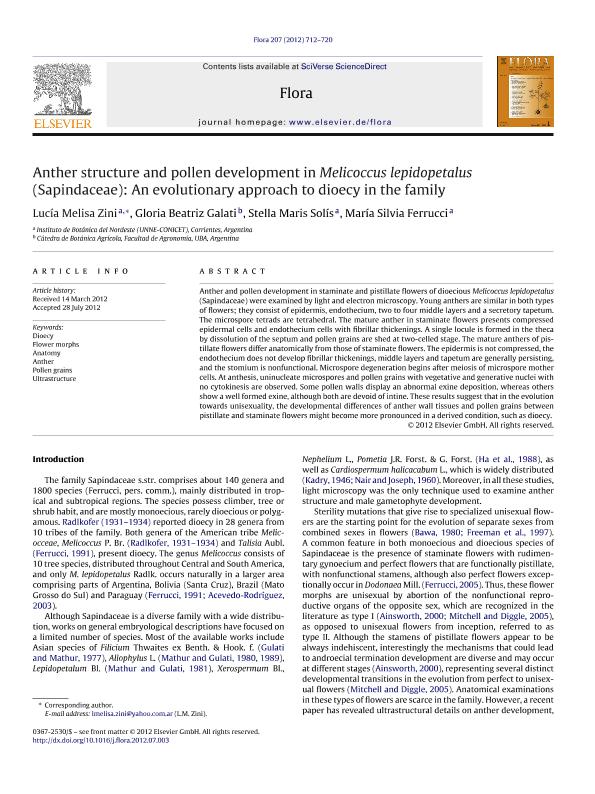Artículo
Anther structure and pollen development in Melicoccus lepidopetalus (Sapindaceae): an evolutionary approach to dioecy in the family
Fecha de publicación:
10/2012
Editorial:
Elsevier Gmbh
Revista:
Flora
ISSN:
0367-2530
Idioma:
Inglés
Tipo de recurso:
Artículo publicado
Clasificación temática:
Resumen
Anther and pollen development in staminate and pistillate flowers of dioecious Melicoccus lepidopetalus (Sapindaceae) were examined by light and electron microscopy. Young anthers are similar in both types of flowers; they consist of epidermis, endothecium, two to four middle layers and a secretory tapetum. The microspore tetrads are tetrahedral. The mature anther in staminate flowers presents compressed epidermal cells and endothecium cells with fibrillar thickenings. A single locule is formed in the theca by dissolution of the septum and pollen grains are shed at two-celled stage. The mature anthers of pistillate flowers differ anatomically from those of staminate flowers. The epidermis is not compressed, the endothecium does not develop fibrillar thickenings, middle layers and tapetum are generally persisting, and the stomium is nonfunctional. Microspore degeneration begins after meiosis of microspore mother cells. At anthesis, uninucleate microspores and pollen grains with vegetative and generative nuclei with no cytokinesis are observed. Some pollen walls display an abnormal exine deposition, whereas others show a well formed exine, although both are devoid of intine. These results suggest that in the evolution towards unisexuality, the developmental differences of anther wall tissues and pollen grains between pistillate and staminate flowers might become more pronounced in a derived condition, such as dioecy.
Palabras clave:
Dioecy
,
Flower Morphs
,
Anatomy
,
Anther-Pollen Grains-Ultrastructure
Archivos asociados
Licencia
Identificadores
Colecciones
Articulos(IBONE)
Articulos de INST.DE BOTANICA DEL NORDESTE (I)
Articulos de INST.DE BOTANICA DEL NORDESTE (I)
Citación
Zini, Lucia Melisa; Galati, Beatriz Gloria; Solis, Stella Maris; Ferrucci, María Silvia; Anther structure and pollen development in Melicoccus lepidopetalus (Sapindaceae): an evolutionary approach to dioecy in the family; Elsevier Gmbh; Flora; 207; 10-2012; 712-720
Compartir
Altmétricas




